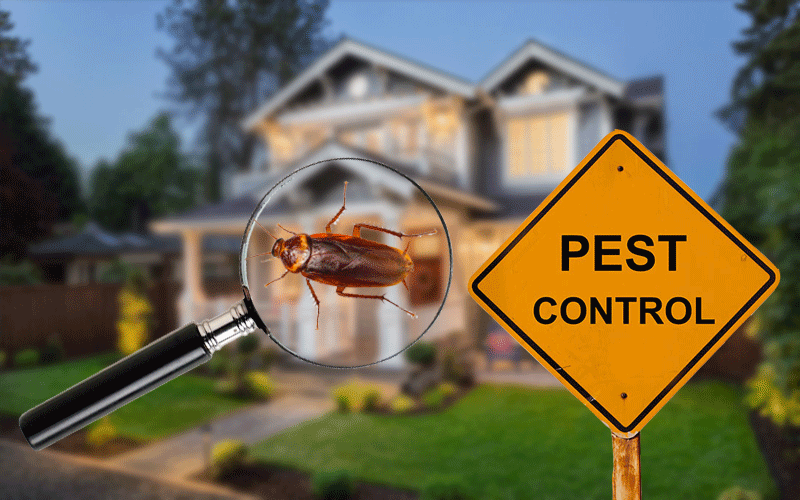A1 Charlotte Pest Control Companies - Your Local Pest Experts
A1 Charlotte Pest Control Companies - Your Local Pest Experts
Blog Article
Bed Insect Therapy Breakdown: Contrasting Chemical Vs. Non-Chemical Solutions
In the realm of parasite control, especially when dealing with the persistent concern of bed bugs, the selection between chemical and non-chemical treatment solutions can be an essential one. Both methods offer distinct benefits and drawbacks, affecting factors such as efficiency, safety and security considerations, and overall expense. By examining the nuanced details of each approach, a clearer understanding of which course to pursue in resolving a bed insect infestation can be attained.
Performance of Chemical Treatments
Chemical treatments for bed insect infestations have been widely recognized for their powerful and rapid effectiveness in eliminating these bugs. When thinking about the efficiency of chemical treatments, it is critical to comprehend that they can supply a fast and extensive service to a bed pest issue.
Additionally, chemical therapies have the advantage of providing residual impacts, meaning that they can continue to remove bed pests even after the first application. This residual action is especially useful in combating any potential re-infestations. In addition, the quick action of chemical treatments can bring alleviation to individuals facing serious bed pest invasions, enabling them to gain back control of their space promptly.
Safety Interest In Chemical Solutions
One crucial aspect that calls for mindful factor to consider when using chemical solutions for bed insect treatment is ensuring the safety of occupants and the environment. Direct exposure to particular chemicals used in bed insect treatments can lead to breathing issues, skin irritation, or various other damaging responses, particularly in individuals with pre-existing conditions or sensitivities.
Moreover, the ecological influence of chemical solutions is one more significant factor to consider. Some pesticides utilized in bed insect therapies may be harmful to helpful insects, wildlife, and communities if they seep into the soil or water supply. It is necessary to make use of chemical therapies sensibly, following security standards, and taking into consideration much less toxic choices to minimize these risks and make certain the efficient and safe administration of bed bug problems.
Advantages of Non-Chemical Techniques
Thinking about the possible safety problems and environmental influence connected with chemical remedies for bed bug treatment, checking out non-chemical approaches provides an encouraging choice with several unique advantages. Non-chemical techniques supply a safer choice for houses, particularly those with animals, individuals, or kids conscious harsh chemicals. These techniques remove the risks of direct exposure to toxic compounds, lowering the potential for unfavorable wellness effects. Moreover, non-chemical therapies are environmentally pleasant, as they do not contribute to air or water air pollution, making them a sustainable selection for insect control.
Furthermore, non-chemical options can be reliable in targeting bed pests, consisting of hard-to-reach locations where chemical treatments might not pass through. Techniques such as warm therapy, vacuuming, vapor cleaning, and mattress coverings give comprehensive elimination without the usage of harmful chemicals. Moreover, non-chemical methods can be much less turbulent, requiring marginal prep work and enabling quicker reentry right into treated locations. In general, going with non-chemical bed bug treatment techniques not just focuses on security and environmental defense however likewise ensures reliable and comprehensive insect control.
Limitations of Non-Chemical Treatments

Furthermore, non-chemical therapies typically need several applications to attain effective elimination. This can be taxing and might not constantly guarantee full elimination of all bed bugs and their eggs, particularly in concealed or hard-to-reach locations.
In addition, the success of non-chemical treatments heavily counts on correct execution and thoroughness, which can be pest control service provider testing for individuals without professional proficiency. Inadequate application of non-chemical methods might cause incomplete removal, bring about persistent problems and the need for extra treatments.
Consequently, while non-chemical therapies have their benefits, it is necessary to recognize these limitations and consider them when figuring out the most efficient technique for handling bed pest infestations.
Expense Comparison: Chemical Vs. Non-Chemical Options
Offered the constraints connected with non-chemical treatments, a crucial element to assess in the context of bed pest monitoring is pesticide control service the cost contrast in between chemical and non-chemical options. In comparison, non-chemical treatments like heat therapy or steam can be extra expensive, with expenses ranging from $1,000 to $6,000 for a whole home. While the initial expense of chemical therapies may appear reduced, several therapies might be needed to totally remove the problem, potentially raising the general price.
Verdict

Considering the possible safety and security concerns and ecological effect linked with chemical services for bed insect therapy, exploring non-chemical techniques presents a promising option with numerous unique advantages.Given the restrictions associated with non-chemical treatments, a crucial element to assess in the context of bed pest management is the expense contrast between chemical and non-chemical choices. In contrast, non-chemical therapies like heat treatment or vapor can be a lot more expensive, with costs varying from $1,000 to $6,000 for a whole home. While the first expense of chemical treatments may seem reduced, multiple treatments may be needed to totally get rid of the problem, possibly increasing the overall find out cost.In conclusion, when comparing chemical and non-chemical bed bug treatment alternatives, it is necessary to take into consideration effectiveness, security, benefits, constraints, and price.
Report this page